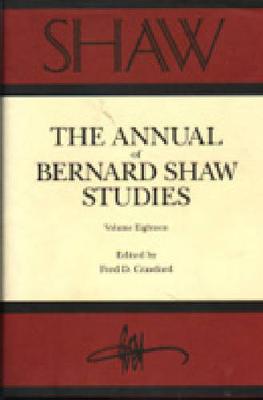SHAW 18 offers fourteen articles that illuminate aspects of Shaw's family history, relations with contemporaries, evolving reputation, and dramatic works.Dan H. Laurence presents an authoritative genealogy of the Shaw and Gurly sides of Shaw's family. Among discoveries that have long eluded Shaw's biographers is the birthdate of Elinor Agnes "Yuppy" Shaw, Shaw's sister.Michael W. Pharand assesses Shaw's intense dislike of Sarah Bernhardt. Stanley Weintraub analyzes Shaw's presence in the plays of Eugene O'Neill. Shaw's Advice to Irishmen, a newspaper account of Shaw's 1918 Dublin lecture "Literature in Ireland," records Shaw's comments on George Moore, J. M. Synge, and James Joyce.Robert G. Everding surveys Shaw festivals from 1916 in Ireland to the present-day Shaw festivals in Ontario and Milwaukee. In a review of Frank Harris on Bernard Shaw (1931), Richard Aldington dismisses Shaw as human being, thinker, and dramatist: "You must be a Shavian to admire and love Shaw the artist." In an interview with Leon Hugo, biographer Michael Holroyd discusses his biography of G.B.S., responses to his biography, and future work involving G.B.S.Jeffrey M. Wallmann argues that alienation in Shaw's plays enhances their contemporary value. Bernard F. Dukore investigates Shaw's reasons for discarding the original final act of The Philanderer. Rodelle Weintraub argues persuasively that You Never Can Tell requires the audience to choose between "Crampton's reality" and "Crampton's dream."Mark H. Sterner, weighing the various charges against Ann Whitefield's character in Man and Superman, concludes that Shaw's treatment of her and Tanner "as significantly different, but nevertheless equal . . . in itself was a revolutionary change in the status of sexual power relationships." Julie A. Sparks identifies W. W. Henley's sonnet "'Liza" as a likely source not only for some of Eliza's traits in Pygmalion but also for images in Man and Superman and Major Barbara.Charles A. Carpenter considers Buoyant Billions and Farfetched Fables in the context of Shaw's response to the birth of the atomic age. Paul Bauschatz, evaluating the differences between My Fair Lady and Pygmalion, illustrates why the film can reflect Shaw's play "only uneasily."SHAW 18 includes five reviews of recent additions to Shavian scholarship as well as John R. Pfeiffer's "Continuing Checklist of Shaviana."
- ISBN10 0271017791
- ISBN13 9780271017792
- Publish Date 28 May 1998
- Publish Status Out of Stock
- Publish Country US
- Imprint Pennsylvania State University Press
- Format Hardcover
- Pages 253
- Language English
